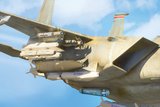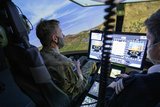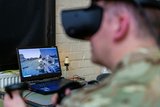Orbital Overwatch: The Crucial Role of Lasers in Space-Based Intelligence
Brought to you in partnership with EOS
Space has become a pivotal arena for military operations, significantly enhancing C5ISR capabilities and integrating assets across various domains.
The strategic upper hand in this frontier is primarily driven by a comprehensive intelligence picture, attainable only through cutting-edge laser technology.
There is often confusion about the reality of space warfare, says Ben Greene, founder and chief innovation officer of Electro Optic Systems (EOS).
While anti-satellite capabilities might seem like an obvious focus, this represents just a small part of the broader space battlefield.
‘Most space warfare capabilities are actually about enabling, enhancing and accelerating your other domain capabilities,’ Greene explains.
This includes using space for communications and navigation—for instance, finding safe zones to fly missiles through to enhance their targeting efficacy.
Lessons from Ukraine
The critical role of space-based technologies on the battlefield, such as satellite communications and surveillance systems, was starkly demonstrated in the Ukraine war through events like the cyber-attack on ViaSat and the utilisation of the Starlink system.
Theodora Ogden, a space policy analyst at RAND, highlighted that in Ukraine, space assets are supporting military operations on both sides of the conflict, including through the provision of SATCOM, space-based ISR, and position, navigating and timing (PNT).
‘Ukraine is obtaining high-resolution imagery, including synthetic aperture radar that can see at night and through clouds. SATCOM and PNT remain important for the Ukrainian networks, artillery systems, and other long-range precision fires,’ Ogden explained to the UK House of Lords International Relations and Defence Committee on 17 April.
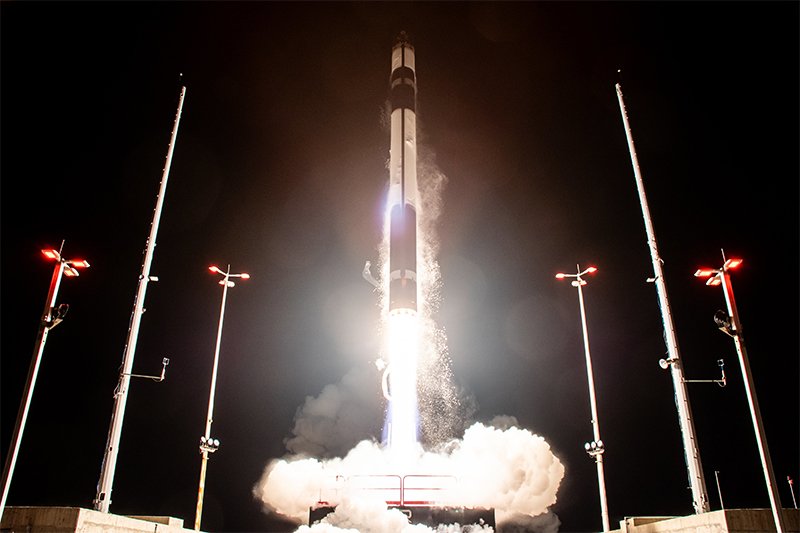
Space domain awareness (SDA), therefore, provides a crucial differentiator between space rivals across low-earth orbit (LEO), medium-Earth orbit (MEO) and geostationary orbit (GEO).
This is a central focus for EOS, which has provided telescope ground stations for imaging, tacking and laser beam delivery for decades.
Greene asserts that the ability to track small objects is the key to maintaining an advantage. ‘It’s down to sensitivity, accuracy and range – those are very important things in terms of gathering military intelligence.’
According to Greene, lasers are essential for achieving a comprehensive surveillance picture as they can precisely track satellite movements down to the millimetre.
Other sensor technologies, including radar, can detect about 90% of space-based threats, leaving a crucial gap that only lasers can fill.
‘It’s like going on vacation and locking every door except the back door,’ he remarks. ‘That’s not effective security.’
Lasers have increasingly become crucial, especially as operators have become proficient at concealing military assets within the space debris field.
Space Debris
Indeed, space debris represents a significant concern for both military and civilian space operators.
The danger of catastrophic collisions in space between active satellites and debris has been exacerbated by tests of direct ascent anti-satellite missiles by various nations, prompting the US to announce a unilateral moratorium on such tests in 2022.
Juliana Suess, a research fellow for space security at RUSI, notes that debris from the 2007 Chinese anti-satellite missile test endangered the International Space Station in 2021.
‘Anti-satellite weapons can potentially create a large field of debris which can be dangerous to the other satellites in orbit. And so obviously, there has been a multitude of efforts to prevent counter-space weapons from proliferating,’ Suess explains.
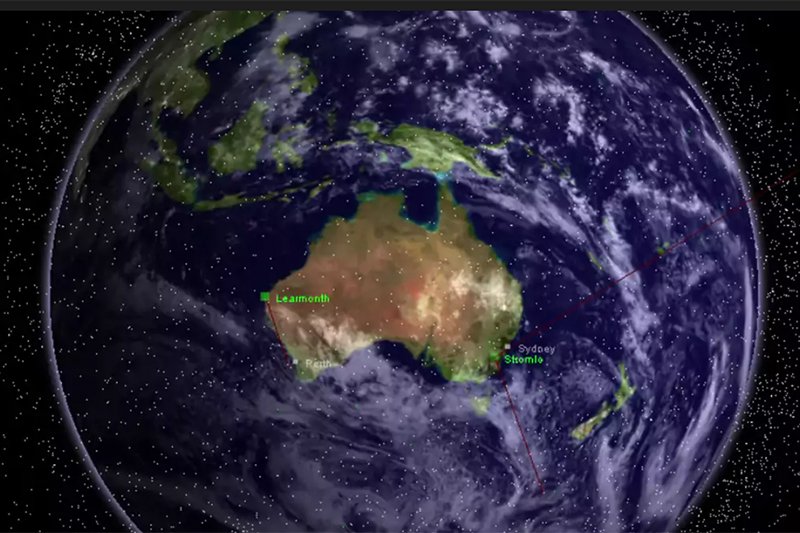
Greene explains that lasers can be used for both the detection and mitigation of such debris, illuminating objects, and altering their orbit.
‘Lasers are much more accurate than any other means, so you can better protect your assets.’
He notes that certain classes of debris objects are highly suited for laser mitigation, notably those with a large surface area relative to their mass, such as a panel that has fallen from a spacecraft.
‘These are easier to push with lasers than they are to capture any other way.’
Lasers are particularly useful when the debris moves into dangerous orbits, i.e. close to your own assets. It is even true of large objects in LEO, which may seem like natural candidates for other types of sensing technology.
‘You would still switch from radar to laser tracking once it becomes a real concern because the laser is much more accurate – it could tell you if the collision distance was 50 metres, for example,’ Greene explains.

For debris with a small surface area and a relatively high mass – such as a ball bearing – lasers are best used in detection, before changing the course of the asset in question.
Intelligence Advantage
Advanced laser technology is central to intelligence in the burgeoning space race. It ensures that, in the event of a conflict or direct confrontation, the correct space-based assets are accurately targeted.
The threat of ‘collateral damage’ in space is considerable, requiring a highly sophisticated engagement strategy to avoid unintentional conflicts.
However, intelligence is key on a wider level, too, as it helps develop deterrence at a large scale.
‘The way that the game is played in space reminds me very much of how the major powers played out the early stages of the nuclear era,’ Greene said.
‘They had to be careful to disclose enough about their capability to act as a deterrent, but not enough about their capability and its locations and disposition for it to become vulnerable in some other way.’
Laser technology is essential to develop the right space intelligence framework.
‘You know you probably won’t have a spy who delivers you an envelope,’ notes Greene.
‘You need a massive space intelligence infrastructure that is persistent, enabling you to know with high confidence where assets are and understand the secondary effects of taking offensive action in space.’
- To learn more about The New Battlefield: Space Defence and the Future of Military Operations, attend the panel session during Eurosatory at 3 pm on Monday, 17 June.
More from Studio
-
![Combat-proven capabilities: How precision-strike systems are evolving for tomorrow’s battlespace (podcast)]()
Combat-proven capabilities: How precision-strike systems are evolving for tomorrow’s battlespace (podcast)
Combat-tested technology is being reshaped to counter A2/AD threats, reduce reliance on GPS and enable faster, more autonomous targeting in complex environments. In this special podcast, experts explain how the evolving threat landscape is shaping next-generation strike capabilities.
-
![Energy evolution: How laser defence systems are powering the next phase of air defence (podcast)]()
Energy evolution: How laser defence systems are powering the next phase of air defence (podcast)
Laser-based air defence is moving from promise to deployment as global threats evolve. In this special podcast, we explore how high-energy laser systems are reshaping interception strategies.
-
![Intelligence advantage: How real-time GEOINT is reshaping military decision-making (Studio)]()
Intelligence advantage: How real-time GEOINT is reshaping military decision-making (Studio)
In today’s contested operational environment, adaptability is key. The new Geospatial-Intelligence as a Service (GEO IaaS) solution from Fujitsu and MAIAR empowers militaries by enabling intelligence advantage, combining advanced technology with human expertise to deliver actionable insights.
-
![Training Together: Unlocking Educational Excellence through Military and Industry Collaboration (Studio)]()
Training Together: Unlocking Educational Excellence through Military and Industry Collaboration (Studio)
Military training is ultimately about people. At Capita, training programmes are built on close engagement with partners, delivering an educational approach that can adapt to individual needs, cultivate leadership – and drive wider cultural change.
-
![Enhancing Military Training Through Digital Technology (Studio)]()
Enhancing Military Training Through Digital Technology (Studio)
Digital technologies offer huge opportunities for defence training. However, militaries must adopt an agile approach, placing the needs of their organisations and personnel at the centre of their efforts.
-
![Layered Defence: How new technologies are enhancing armoured vehicle survivability and manoeuvrability (Studio)]()
Layered Defence: How new technologies are enhancing armoured vehicle survivability and manoeuvrability (Studio)
As modern threats evolve, armoured fighting vehicles face a new era of challenges, from loitering munitions to kinetic energy projectiles. Advances in active, passive, and reactive protection systems are crucial to ensuring battlefield dominance, freedom of manouver and vehicle survivability.










